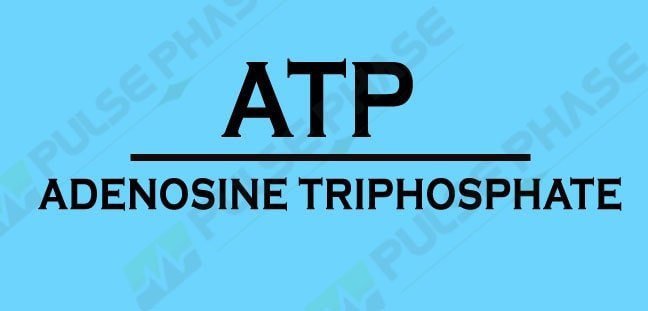The Word ATP stands for Adenosine Triphosphate. Adenosine triphosphate (ATP) is considered by scientists to be the vitality of life. It is the high-vitality atom that stores the vitality we have to do pretty much all that we do. It is available in the cytoplasm and nucleoplasm of each cell, and basically all the physiological instruments that require vitality for activity acquire it straightforwardly from the put-away ATP.
(Guyton) As nourishment in the cells is step by step oxidized, the discharged vitality is utilized to restructure the ATP so the cell consistently keeps up a stockpile of this fundamental particle. Karp cites a gauge that in excess of 2 x 1026 particles or >160kg of ATP is framed in the human body day by day! ATP is astounding for its capacity to go into many coupled responses, both those to nourishment to extricate vitality and with the responses in other physiological procedures to give vitality to them. In creature frameworks, the ATP can be orchestrated during the time spent glycolysis in which there is a net creation of two ATP atoms in a cycle. This glycolysis is a significant advance in an anaerobic breath. For oxygen-consuming breath the glycolysis is likewise a wellspring of ATP yet the more gainful procedure in the small vitality processing plants called mitochondria assumes a significant job in the creation of ATP.
The structure of ATP has an arranged carbon compound as a spine, however, the part that is extremely basic is the phosphorous part – the triphosphate. Three phosphorous gatherings are associated by oxygens to one another, and there are likewise side oxygens associated with the phosphorous iotas. Under the ordinary conditions in the body, every one of these oxygens has a negative charge, and consequently repulse one another. These clustered up negative charges need to get away – to escape from one another, so there is a great deal of potential vitality here.
On the off chance that you evacuate only one of these phosphate bunches from the end, so that there are only two phosphate gatherings, the particle is a lot more joyful. This transformation from ATP to ADP is a very urgent response for the providing of vitality forever forms. Simply the cutting of one security with the going with improvement is adequate to free about 7.3 kilocalories per mole = 30.6 kJ/mol. This is about equivalent to the vitality in a solitary nut.
Living things can utilize ATP like a battery. The ATP can control required responses by losing one of its phosphorous gatherings to shape ADP, yet you can utilize nourishment vitality in the mitochondria to change over the ADP back to ATP with the goal that the vitality is again accessible to accomplish required work. In plants, daylight vitality can be utilized to change over the less dynamic compound back to the profoundly vigorous structure. For creatures, you utilize the vitality from your high vitality stockpiling particles to do what you have to do to keep yourself alive, and afterward you “revive” them to return them in the high vitality state.
The oxidation of glucose works in a cycle called the TCA cycle or Krebs cycle in eukaryotic cells to give vitality to the transformation of ADP to ATP.
Check out more full form(s) to enhance your knowledge:




